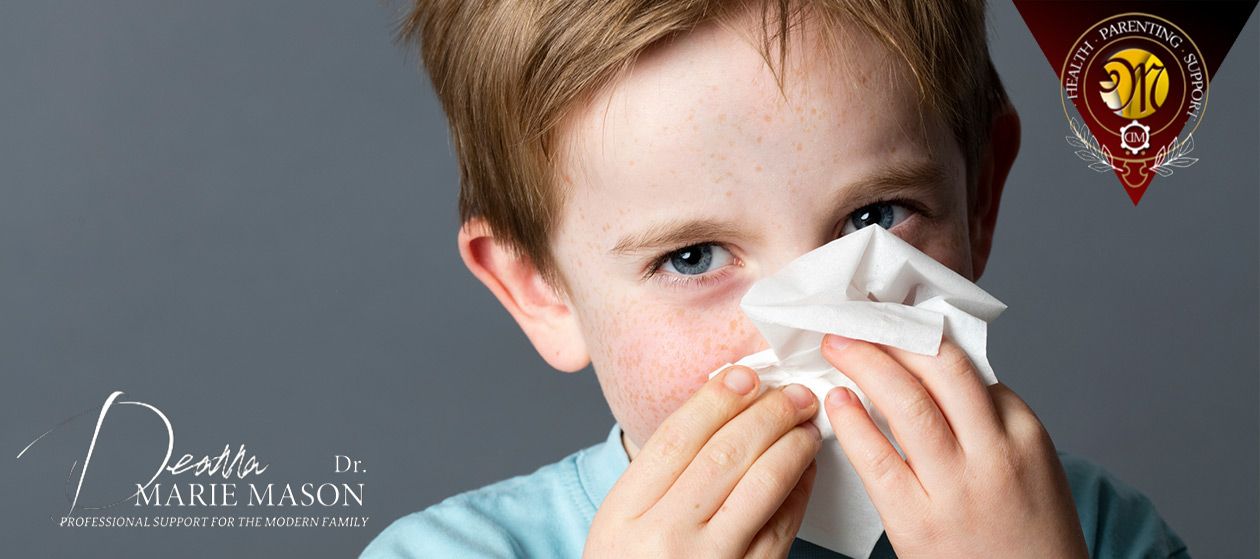Not all illnesses require that a child be excluded from school. Some only require prevention to avoid spreading the illness to others. Learning some new information about how some illnesses spread and practicing techniques to reduce illness transmission can help you make better decisions regarding your child’s health.
This post will focus on the common illnesses that can be managed with good prevention techniques to allow a child to return to school.
The information below is not meant to be exhaustive. It is meant to provide a general overview of common childhood concerns that parents frequently encounter. Please remember that the advice of the child’s health care provider should take precedence over this general information.
How can we keep our child healthy?
Prevention of illness is the best way to keep kids in school. Children can be taught from a very young age how to develop skills that will keep them healthy on a day-to-day basis. Modeling healthy behaviors for children is the best way to help kids understand their importance and how to implement them into their daily activities.
Hand washing
Teach children to wash their hands properly and frequently. Children (really, everyone) should wash their hands:
- Before meals or snacks
- Before preparing food
- Before touching their eyes, nose, or mouth (e.g. blowing nose, brushing teeth, removing contact lenses)
- After using the bathroom
- After being outside
- After touching pets
- After riding public transportation
- After sneezing or coughing into hands
How to wash hands properly:
- Wet hand with clean running water and apply soap.
- Rub hands together paying special attention to the back of the hand, between the fingers, and under the fingernails.
- Scrub the hands together for at least 20 seconds. Children can be taught to sing Happy Birthday twice to themselves to gauge the correct amount of time.
- Rinse both hands under running water. Tell children that the germs from their hands “run” down the drain.
- Dry hands on a clean towel or let them air dry.
If hands are not visibly dirty and running water is not available to wash hands, children should be encouraged to use an alcohol based hand sanitizer.
Protecting others
Children can be taught techniques to avoid spreading illness to others, especially during the incubation period (the time before symptoms appear but the illness is in the body).
- Encourage children to sneeze into their elbow rather than their hands to avoid spreading germs to others.
- Show children how to wipe or blow nose into a tissue rather than rubbing their hand or arm across their nose.
- Teach children to wash their hands after using the bathroom.
- Teach children to wash their hands after blowing their nose or sneezing/coughing into their hands
Protecting themselves
In addition to proper and timely hand washing, children may reduce the number of infections they have by:
- Keeping hands away from their eyes, nose, and mouth. This is where germs most often enter the body.
- This can be particularly difficult in children who pull their eyelashes or eyebrows, pick their nose, or chew their fingernails.
- Teaching children not to share bottles, food, lip balms, or candy can lower the routes that germs enter the body.
- Eating a healthy, balanced diet to support a good immune system.
- Getting proper rest. If you are unsure how much sleep your child needs, please read my post titled, How much sleep does my child need to grow and learn best.
When is it okay to send my child to school?
As a general rule, if a child is able to do their normal activities without becoming tired, is eating and drinking normally, and does not have a fever, diarrhea, or vomiting, he or she can attend school. Just be sure that they get a little extra rest until they are 100% better.
Please note: The part of being fever free means not having a fever when not taking acetaminophen (Tylenol) or ibuprofen (Advil). Some parents give acetaminophen or ibuprofen to children to reduce their fever before sending them to school. This is problematic for two reasons:
- First, if a child has a fever it is because there is an infection in his or her body. When the body is fighting an infection, it is more susceptible to picking up another illness. That means a child who goes to school with a medicated fever may actually become sicker with a more serious illness.
- Second, sending a child to school with a medicated fever means that they may be contagious and spreading their illness to others unknowingly. This means that other children may become ill from your child.
When looking at how to keep kids in school, an old adage still applies: An ounce of prevention is worth a pound of cure. Helping kids learn how to take care of their bodies from a young age will help keep them healthy and start them on the right track for learning self-care. Overall, this increases the number of days children are in school and learning.
If you found this article interesting, please share it! And be sure to check out more articles on Proactive Parenting techniques by clicking on the “Article Search” menu to the right if you are viewing on your computer or below if you are reading on your mobile device.
About the instructor
Proactive Parenting
Deanna Marie Mason PhD
More than 20 years of clinical experience helping families:
Bachelor's Degree in Registered Nursing, Master’s Degree in Pediatric Nurse Practitioner and PhD in Nursing. University professor, patient education specialist, pediatric researcher, published author and reviewer to first-line international scientific journals, continuous philanthropic activity related to health promotion and education, wife and mother of two children.






